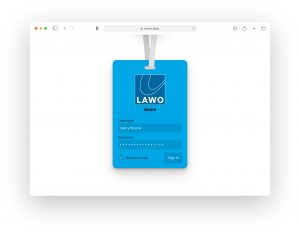Lawo Enhances Management of IP Broadcast Infrastructures With Home
Story Highlights
Lawo has introduced Home, a new management platform for IP-based media infrastructures. It is natively built on a cloud-ready microservices architecture, enabling users to connect, manage and secure networked production setups from the ground up. Furthermore, it provides centralized access and control for all Lawo gear within a setup.
 Home is said to help broadcast professionals address some of the most demanding requirements of modern IP infrastructures, including automated discovery and registration of devices, connection management, flow control, software and firmware management, scalability and security.
Home is said to help broadcast professionals address some of the most demanding requirements of modern IP infrastructures, including automated discovery and registration of devices, connection management, flow control, software and firmware management, scalability and security.
“In today’s IP project implementations, the physical build and cabling is only half of the way. The other half consists of configuration. Home significantly increases efficiency in setting up IP system installs,” says Axel Kern, Lawo’s senior product manager media infrastructure control.
“Broadcasters and service providers are faced with constantly changing production demands, and setups need to adapt, no matter if on-premise or off-premise, local or remote, or even cloud. This new management platform provides the architecture for our customers to scale with their agile business requirements.”
The Home platform is based on open standards such as ST-2110, NMOS, IEEE802.1x and RADIUS and follows LUX, Lawo’s unified experience design principles, which provide a consistent workflow across all Lawo IP products.
It features automatic plug and play discovery of IP audio and video devices, which are registered with their name, location, status and type. This applies not only to Lawo products but to third-party solutions as well via NMOS. Discovered devices are managed in a central inventory list, ready for access and configuration.
Home provides a centralized ‘mission control’ for processes such as setting generic device parameters or configuring senders and receivers, providing fast and unified access to device parameters for easy tweaking, irrespective of the end point being controlled.
Its user-friendly UI is designed to allow users to organize and access processing services easily. With all required facilities accessible in one place, operators can set up and change stream configurations and route them across an infrastructure without the need for a separate controller. For large infrastructures, Home works seamlessly with a broadcast controller in the same set-up to speed up configuration and operation.
Home also provides a variety of security strategies, first of which is quarantining unknown devices when they come online. Only after being deliberately approved, via an IEEE802.1X-based routine, can they begin exchanging signals with the Home network.
Secondly, Home uses an authentication strategy based on a centralized user management system, with dedicated user roles and groups. The LDAP-based service allows users to authenticate either locally – within Home – or via their own corporate IT infrastructure, e.g. Microsoft Active Directory. Finally comes the arbitration of devices and individual streams based on pinpointed rights management. Home’s architecture is prepared to manage services such as transport layer security, network segmentation and other IT security mechanisms such as RADIUS.
The platform is cloud-native by design, which means that its architecture is built to run detached from hardware constraints. This does not automatically mean that services must be outsourced to an external service provider whose meter is running 24/7; with Home, the cloud starts on a campus, private and locally, on COTS hardware. The platform is designed as functional blocks that provide microservices, which are self-contained and supply functionality to operators or other services.
Home can be expanded with additional services at any time to increase its functionality. Should there be a need for a larger RDS because the installation grows, additional instances of the required resources can be added anytime.
